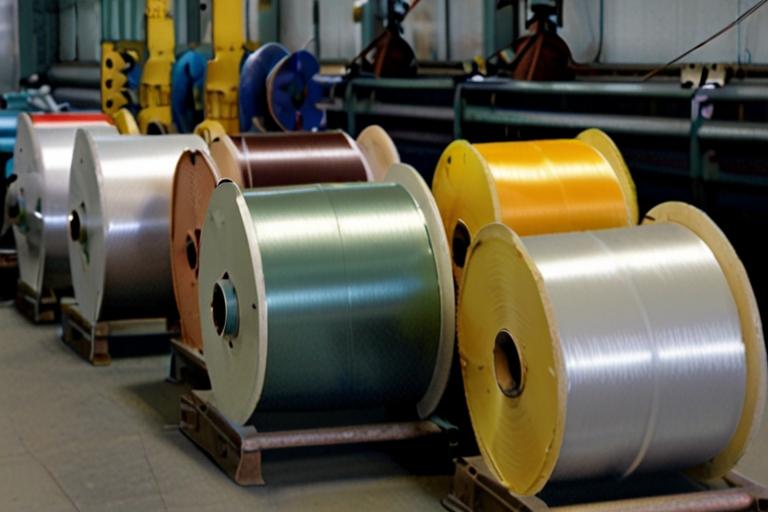Press release
Polyester Filament Yarn Manufacturing Plant Project Report 2024: Setup Cost, Machinery Requirements and Raw Materials
IMARC Group's report titled "Polyester Filament Yarn Manufacturing Plant Project Report 2024: Industry Trends, Plant Setup, Machinery, Raw Materials, Investment Opportunities, Cost and Revenue" provides a comprehensive guide for establishing a polyester filament yarn manufacturing plant. The report covers various aspects, ranging from a broad market overview to intricate details like unit operations, raw material and utility requirements, infrastructure necessities, machinery requirements, manpower needs, packaging and transportation requirements, and more.
In addition to the operational aspects, the report also provides in-depth insights into polyester filament yarn manufacturing plant, project economics, encompassing vital aspects such as capital investments, project funding, operating expenses, income and expenditure projections, fixed and variable costs, direct and indirect expenses, expected ROI, net present value (NPV), profit and loss account, and thorough financial analysis, among other crucial metrics. With this comprehensive roadmap, entrepreneurs and stakeholders can make informed decisions and venture into a successful polyester filament yarn manufacturing unit.
Request For a Sample Report: https://www.imarcgroup.com/polyester-filament-yarn-manufacturing-plant-project-report/requestsample
Customization Available:
• Plant Location
• Plant Capacity
• Machinery- Automatic/ Semi-automatic/ Manual
• List of Machinery Provider
Polyester Filament Yarn (PFY) is a type of synthetic yarn made from polyester, a polymer derived from petroleum. PFY is produced through a process of polymerization and extrusion, where the polyester is melted and extruded through spinnerets to form long, continuous filaments. These filaments are then cooled and wound onto spools. PFY is known for its high strength, durability, and resistance to shrinking, stretching, and abrasion. It is widely used in the textile industry for manufacturing fabrics, clothing, home furnishings, and industrial applications. The yarn's properties, such as smooth texture, uniformity, and ability to retain color, make it a popular choice for a variety of end uses, including sportswear, fashion apparel, and technical textiles.
The expanding global textile industry significantly fuels the demand for PFY. Its versatility, strength, and durability make it a preferred material for producing a wide range of textile products, including clothing, home furnishings, and industrial fabrics. The increasing preference for synthetic fibers over natural fibers is a major driver. PFY's properties, such as resistance to shrinking, stretching, and abrasion, along with its ability to retain color and shape, make it highly desirable for various applications. Innovations in PFY production technologies enhance the quality and performance of the yarn. Advanced manufacturing techniques allow to production of high-tenacity and microfilament yarns, meeting the specific needs of different applications. Rapid urbanization and changing lifestyles increase the demand for ready-made garments and fashion apparel, driving the need for PFY. The growing trend of fast fashion and the desire for affordable yet stylish clothing contribute to market growth. The rising popularity of sports and fitness activities boosts the demand for performance textiles. PFY's moisture-wicking, quick-drying, and durable properties make it ideal for sportswear and activewear, propelling market expansion. The increasing awareness about environmental sustainability drives the development of eco-friendly PFY variants, such as recycled polyester yarns. These sustainable options appeal to environmentally conscious consumers and brands, further driving market growth. Rapid industrialization and economic growth in emerging markets, particularly in Asia-Pacific, lead to increased production and consumption of PFY. These regions offer significant growth opportunities due to their large population base and expanding textile manufacturing capabilities.
Browse Full Report with TOC: https://www.imarcgroup.com/polyester-filament-yarn-manufacturing-plant-project-report
Key Insights Covered the Polyester Filament Yarn Plant Report
Market Analysis:
• Market Trends
• Market Breakup by Segment
• Market Breakup by Region
• Price Analysis
• Impact of COVID-19
• Market Forecast
Key Aspects Required for Setting Up a Polyester Filament Yarn Plant
Detailed Process Flow:
• Product Overview
• Unit Operations Involved
• Mass Balance and Raw Material Requirements
• Quality Assurance Criteria
• Technical Tests
Project Details, Requirements and Costs Involved:
• Land, Location and Site Development
• Plant Layout
• Machinery Requirements and Costs
• Raw Material Requirements and Costs
• Packaging Requirements and Costs
• Transportation Requirements and Costs
• Utility Requirements and Costs
• Human Resource Requirements and Costs
Project Economics:
• Capital Investments
• Operating Costs
• Expenditure Projections
• Revenue Projections
• Taxation and Depreciation
• Profit Projections
• Financial Analysis
Ask an Analyst: https://www.imarcgroup.com/request?type=report&id=9389&flag=C
Key Questions Answered in This Report:
• How has the polyester filament yarn (PFY) market performed so far and how will it perform in the coming years?
• What is the market segmentation of the global polyester filament yarn (PFY) market?
• What is the regional breakup of the global polyester filament yarn (PFY) market?
• What are the price trends of various feedstocks in the polyester filament yarn (PFY) industry?
• What is the structure of the polyester filament yarn (PFY) industry and who are the key players?
• What are the various unit operations involved in a polyester filament yarn (PFY) manufacturing plant?
• What is the total size of land required for setting up a polyester filament yarn (PFY) manufacturing plant?
• What is the layout of a polyester filament yarn (PFY) manufacturing plant?
• What are the machinery requirements for setting up a polyester filament yarn (PFY) manufacturing plant?
• What are the raw material requirements for setting up a polyester filament yarn (PFY) manufacturing plant?
• What are the packaging requirements for setting up a polyester filament yarn (PFY) manufacturing plant?
• What are the transportation requirements for setting up a polyester filament yarn (PFY) manufacturing plant?
• What are the utility requirements for setting up a polyester filament yarn (PFY) manufacturing plant?
• What are the human resource requirements for setting up a polyester filament yarn (PFY) manufacturing plant?
• What are the infrastructure costs for setting up a polyester filament yarn (PFY) manufacturing plant?
• What are the capital costs for setting up a polyester filament yarn (PFY) manufacturing plant?
• What are the operating costs for setting up a polyester filament yarn (PFY) manufacturing plant?
• What should be the pricing mechanism of the final product?
• What will be the income and expenditures for a polyester filament yarn (PFY) manufacturing plant?
• What is the time required to break even?
• What are the profit projections for setting up a polyester filament yarn (PFY) manufacturing plant?
• What are the key success and risk factors in the polyester filament yarn (PFY) industry?
• What are the key regulatory procedures and requirements for setting up a polyester filament yarn (PFY) manufacturing plant?
• What are the key certifications required for setting up a polyester filament yarn (PFY) manufacturing plant?
Browse Other Report By IMARC Group:
• Aluminum Profiles Manufacturing Plant Project Report: https://www.imarcgroup.com/aluminum-profiles-manufacturing-plant-project-report
• Potassium Phosphinate Manufacturing Plant Project Report: https://www.imarcgroup.com/potassium-phosphinate-manufacturing-plant-project-report
• Chlorine Dioxide Manufacturing Plant Project Report: https://www.imarcgroup.com/chlorine-dioxide-manufacturing-plant-project-report
• Chlorinated Polyethylene Manufacturing Plant Project Report: https://www.imarcgroup.com/chlorinated-polyethylene-manufacturing-plant-project-report
• Galantamine (Razadyne) Manufacturing Plant Project Report: https://www.imarcgroup.com/galantamine-manufacturing-plant-project-report
Contact US
IMARC Group
134 N 4th St. Brooklyn, NY 11249, USA
Email: Sales@imarcgroup.com
Tel No:(D) +91 120 433 0800
Phone Number: - +1 631 791 1145, +91-120-433-0800
About Us
IMARC Group is a leading market research company that offers management strategy and market research worldwide. We partner with clients in all sectors and regions to identify their highest-value opportunities, address their most critical challenges, and transform their businesses.
IMARC Group's information products include major market, scientific, economic and technological developments for business leaders in pharmaceutical, industrial, and high technology organizations. Market forecasts and industry analysis for biotechnology, advanced materials, pharmaceuticals, food and beverage, travel and tourism, nanotechnology and novel processing methods are at the top of the company's expertise.
In addition to the operational aspects, the report also provides in-depth insights into polyester filament yarn manufacturing plant, project economics, encompassing vital aspects such as capital investments, project funding, operating expenses, income and expenditure projections, fixed and variable costs, direct and indirect expenses, expected ROI, net present value (NPV), profit and loss account, and thorough financial analysis, among other crucial metrics. With this comprehensive roadmap, entrepreneurs and stakeholders can make informed decisions and venture into a successful polyester filament yarn manufacturing unit.
Request For a Sample Report: https://www.imarcgroup.com/polyester-filament-yarn-manufacturing-plant-project-report/requestsample
Customization Available:
• Plant Location
• Plant Capacity
• Machinery- Automatic/ Semi-automatic/ Manual
• List of Machinery Provider
Polyester Filament Yarn (PFY) is a type of synthetic yarn made from polyester, a polymer derived from petroleum. PFY is produced through a process of polymerization and extrusion, where the polyester is melted and extruded through spinnerets to form long, continuous filaments. These filaments are then cooled and wound onto spools. PFY is known for its high strength, durability, and resistance to shrinking, stretching, and abrasion. It is widely used in the textile industry for manufacturing fabrics, clothing, home furnishings, and industrial applications. The yarn's properties, such as smooth texture, uniformity, and ability to retain color, make it a popular choice for a variety of end uses, including sportswear, fashion apparel, and technical textiles.
The expanding global textile industry significantly fuels the demand for PFY. Its versatility, strength, and durability make it a preferred material for producing a wide range of textile products, including clothing, home furnishings, and industrial fabrics. The increasing preference for synthetic fibers over natural fibers is a major driver. PFY's properties, such as resistance to shrinking, stretching, and abrasion, along with its ability to retain color and shape, make it highly desirable for various applications. Innovations in PFY production technologies enhance the quality and performance of the yarn. Advanced manufacturing techniques allow to production of high-tenacity and microfilament yarns, meeting the specific needs of different applications. Rapid urbanization and changing lifestyles increase the demand for ready-made garments and fashion apparel, driving the need for PFY. The growing trend of fast fashion and the desire for affordable yet stylish clothing contribute to market growth. The rising popularity of sports and fitness activities boosts the demand for performance textiles. PFY's moisture-wicking, quick-drying, and durable properties make it ideal for sportswear and activewear, propelling market expansion. The increasing awareness about environmental sustainability drives the development of eco-friendly PFY variants, such as recycled polyester yarns. These sustainable options appeal to environmentally conscious consumers and brands, further driving market growth. Rapid industrialization and economic growth in emerging markets, particularly in Asia-Pacific, lead to increased production and consumption of PFY. These regions offer significant growth opportunities due to their large population base and expanding textile manufacturing capabilities.
Browse Full Report with TOC: https://www.imarcgroup.com/polyester-filament-yarn-manufacturing-plant-project-report
Key Insights Covered the Polyester Filament Yarn Plant Report
Market Analysis:
• Market Trends
• Market Breakup by Segment
• Market Breakup by Region
• Price Analysis
• Impact of COVID-19
• Market Forecast
Key Aspects Required for Setting Up a Polyester Filament Yarn Plant
Detailed Process Flow:
• Product Overview
• Unit Operations Involved
• Mass Balance and Raw Material Requirements
• Quality Assurance Criteria
• Technical Tests
Project Details, Requirements and Costs Involved:
• Land, Location and Site Development
• Plant Layout
• Machinery Requirements and Costs
• Raw Material Requirements and Costs
• Packaging Requirements and Costs
• Transportation Requirements and Costs
• Utility Requirements and Costs
• Human Resource Requirements and Costs
Project Economics:
• Capital Investments
• Operating Costs
• Expenditure Projections
• Revenue Projections
• Taxation and Depreciation
• Profit Projections
• Financial Analysis
Ask an Analyst: https://www.imarcgroup.com/request?type=report&id=9389&flag=C
Key Questions Answered in This Report:
• How has the polyester filament yarn (PFY) market performed so far and how will it perform in the coming years?
• What is the market segmentation of the global polyester filament yarn (PFY) market?
• What is the regional breakup of the global polyester filament yarn (PFY) market?
• What are the price trends of various feedstocks in the polyester filament yarn (PFY) industry?
• What is the structure of the polyester filament yarn (PFY) industry and who are the key players?
• What are the various unit operations involved in a polyester filament yarn (PFY) manufacturing plant?
• What is the total size of land required for setting up a polyester filament yarn (PFY) manufacturing plant?
• What is the layout of a polyester filament yarn (PFY) manufacturing plant?
• What are the machinery requirements for setting up a polyester filament yarn (PFY) manufacturing plant?
• What are the raw material requirements for setting up a polyester filament yarn (PFY) manufacturing plant?
• What are the packaging requirements for setting up a polyester filament yarn (PFY) manufacturing plant?
• What are the transportation requirements for setting up a polyester filament yarn (PFY) manufacturing plant?
• What are the utility requirements for setting up a polyester filament yarn (PFY) manufacturing plant?
• What are the human resource requirements for setting up a polyester filament yarn (PFY) manufacturing plant?
• What are the infrastructure costs for setting up a polyester filament yarn (PFY) manufacturing plant?
• What are the capital costs for setting up a polyester filament yarn (PFY) manufacturing plant?
• What are the operating costs for setting up a polyester filament yarn (PFY) manufacturing plant?
• What should be the pricing mechanism of the final product?
• What will be the income and expenditures for a polyester filament yarn (PFY) manufacturing plant?
• What is the time required to break even?
• What are the profit projections for setting up a polyester filament yarn (PFY) manufacturing plant?
• What are the key success and risk factors in the polyester filament yarn (PFY) industry?
• What are the key regulatory procedures and requirements for setting up a polyester filament yarn (PFY) manufacturing plant?
• What are the key certifications required for setting up a polyester filament yarn (PFY) manufacturing plant?
Browse Other Report By IMARC Group:
• Aluminum Profiles Manufacturing Plant Project Report: https://www.imarcgroup.com/aluminum-profiles-manufacturing-plant-project-report
• Potassium Phosphinate Manufacturing Plant Project Report: https://www.imarcgroup.com/potassium-phosphinate-manufacturing-plant-project-report
• Chlorine Dioxide Manufacturing Plant Project Report: https://www.imarcgroup.com/chlorine-dioxide-manufacturing-plant-project-report
• Chlorinated Polyethylene Manufacturing Plant Project Report: https://www.imarcgroup.com/chlorinated-polyethylene-manufacturing-plant-project-report
• Galantamine (Razadyne) Manufacturing Plant Project Report: https://www.imarcgroup.com/galantamine-manufacturing-plant-project-report
Contact US
IMARC Group
134 N 4th St. Brooklyn, NY 11249, USA
Email: Sales@imarcgroup.com
Tel No:(D) +91 120 433 0800
Phone Number: - +1 631 791 1145, +91-120-433-0800
About Us
IMARC Group is a leading market research company that offers management strategy and market research worldwide. We partner with clients in all sectors and regions to identify their highest-value opportunities, address their most critical challenges, and transform their businesses.
IMARC Group's information products include major market, scientific, economic and technological developments for business leaders in pharmaceutical, industrial, and high technology organizations. Market forecasts and industry analysis for biotechnology, advanced materials, pharmaceuticals, food and beverage, travel and tourism, nanotechnology and novel processing methods are at the top of the company's expertise.
Permanent link to this press release:
Copy
Please set a link in the press area of your homepage
to this press release on woodPRI. woodPRI disclaims liability for any content contained in
this release.
Recommend

/newsMicroencapsulation Market Deep Analysis on Key Players - Dow Corning, Encapsys, Syngenta Crop Protection, Evonik Industries, 3M and Bayer
Market Study Report Adds Global Microencapsulation Market Size, Status and Forecast 2024 added to its database. The report provides key statistics on the current state of the industry and other analytical data to understand the market.
Extensive research is required for choosing the appropriate cor...

/newsGermany Airbag Market Size 2023: Global Share, Industry And Report Analysis By 2030 | Hyundai Mobis Co., Ltd. Key Safety Systems, Inc. Robert Bosch GmbH
Germany airbag market is expected to grow at a CAGR of around 6% during the forecast period. Germany Airbag Market research report refers to gathering and analyzing significant market data serve as best medium for various industry players to launch novel product or service. It is vital for key firms...
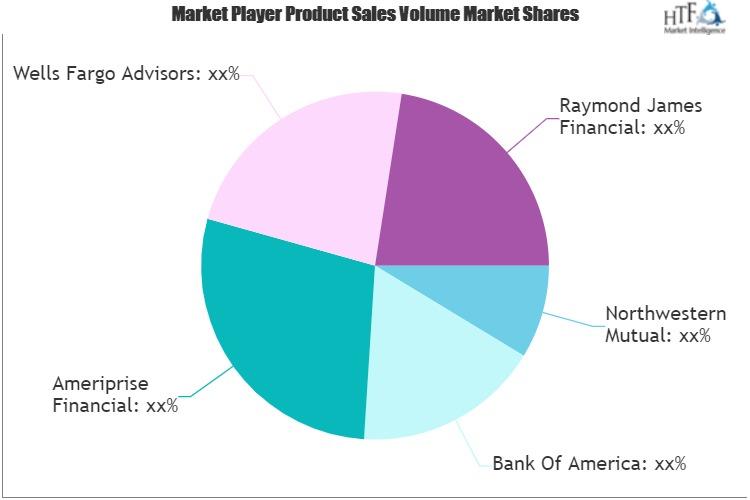
/newsSecurities Brokerages And Stock Exchanges Market Outlook 2021: Big Things are Happening
A new intelligence report released by HTF MI with title "Global Securities Brokerages And Stock Exchanges Market Survey & Outlook" is designed covering micro level of analysis by Insurers and key business segments, offerings and sales channels. The Global Securities Brokerages And Stock Exchange...
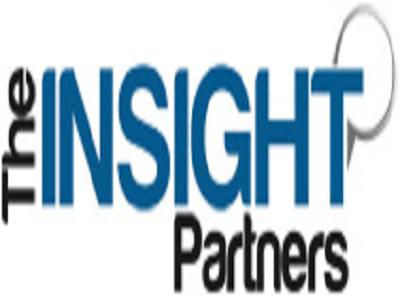
/newsRenewable Chemicals Market Emerging Trends and Competitive Landscape Forecast to 2028
The renewable chemicals market was valued at US$ 80,566.30 million in 2021 and is projected to reach US$ 1,76,750.76 million by 2028 it is expected to grow at a CAGR of 11.9% from 2021 to 2028. The research report focuses on the current market trends, opportunities, future potential of the market, a...
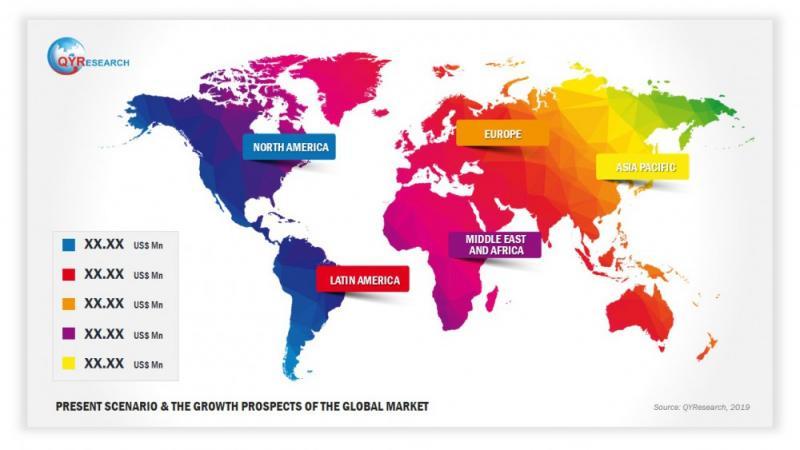
/newsHow Coronavirus is Impacting Cold Brew Coffee, Global Market Volume Analysis, Size, Share and Key Trends 2020-2026
"Market Latest Research Report 2020:
Los Angles United States, February 2020: The Cold Brew Coffee market has been garnering remarkable momentum in the recent years. The steadily escalating demand due to improving purchasing power is projected to bode well for the global market. QY Research's lates...
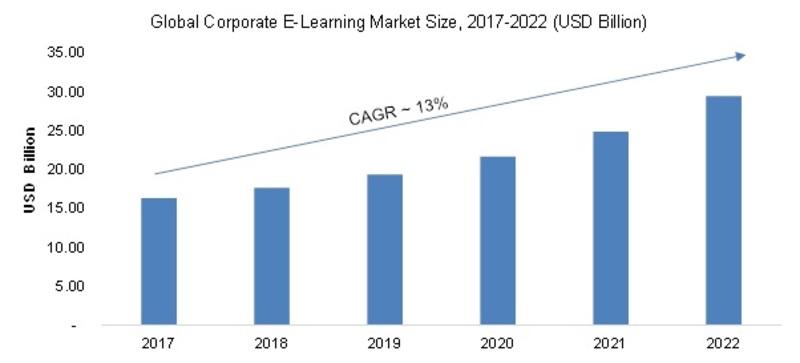
/newsCorporate E-Learning Market - Global Industry Size, Share, Key Players Analysis that are Infor, SkillSoft Corporation, Adrenna, CERTPOINT Systems and others with Regional Forecast to 2022
Overview:
E-Learning is used to enhance the learning procedures for newer job requirements and to make employees sound about the internal and external changes in the market and respective organizations. This method has created considerable differences in the ways of training and developing employee...
